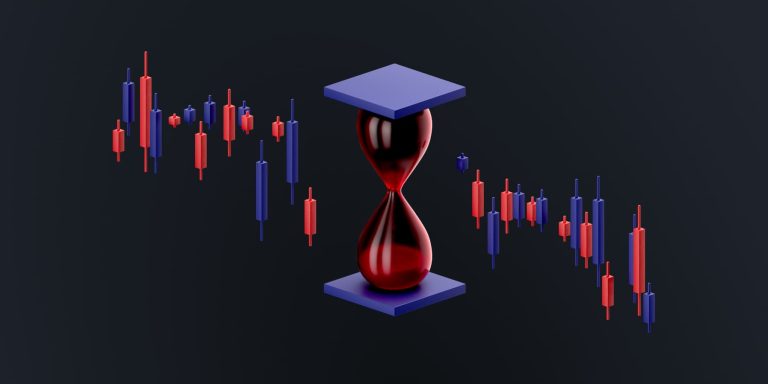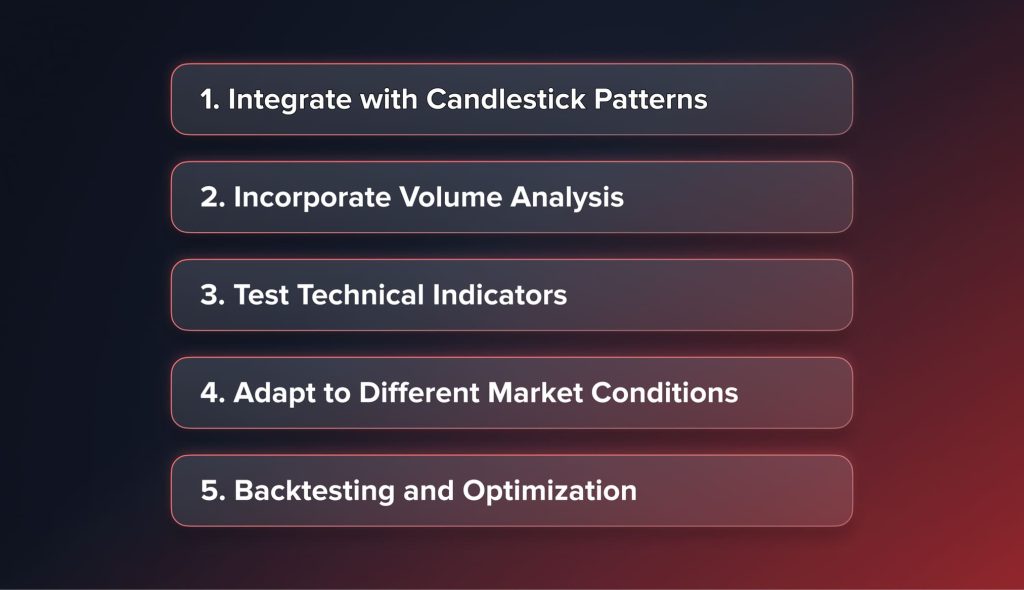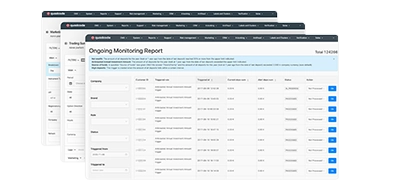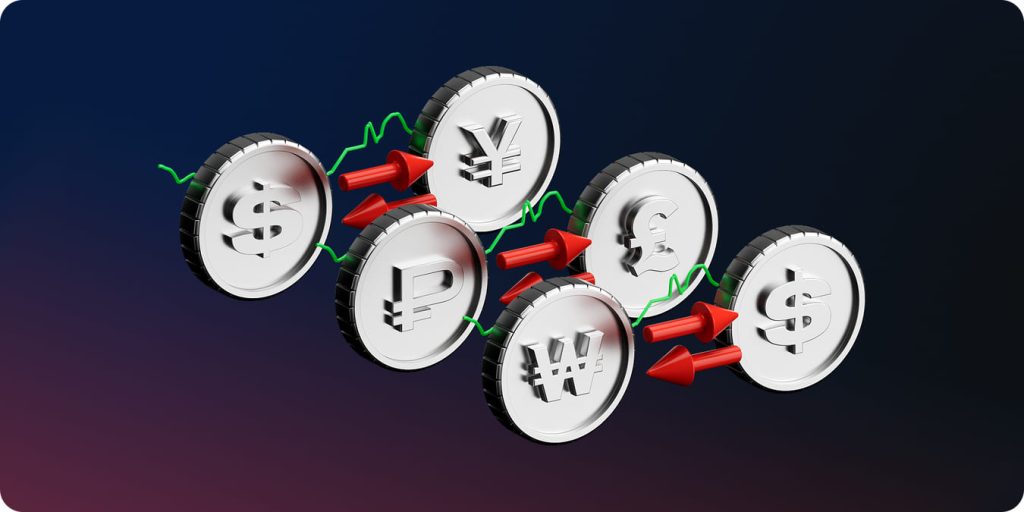Back
Contents
What is Liquidity Sweep: Everything You Need to Know


Vitaly Makarenko
Chief Commercial Officer

Demetris Makrides
Senior Business Development Manager
Key Takeaways
- Liquidity sweeps are strategic large trades designed to trigger bunched stop orders and outstanding positions.
- They typically occur at swing highs/lows, support and resistance levels, and Fibonacci points where clusters of liquidity build up.
- Traders use liquidity sweeps to confirm direction of trend, catch reversals, or profit from stop hunts by institutional players.
- In order to increase accuracy, always combine liquidity sweep analysis with market structure, order flow, and volume data so as to rule out spurious signals and manage risk.
What is a Liquidity Sweep?
Within the Smart Money Concept (SMC) framework, a liquidity sweep occurs when large-scale market players—such as institutional investors or well-capitalized speculators—execute significant trades to trigger pending buy or sell orders at specific price levels.
Understanding how these moves interact with order flow and order book dynamics is crucial, as it reveals how orders are stacked and absorbed by the market.
These buy-side and sell-side liquidity flows are typically driven by institutional players seeking to capture trapped orders around key price levels.
The key to understanding liquidity sweeps lies in identifying liquidity zones. These zones are areas on trading charts where a high concentration of orders, including stop-loss orders and pending positions, exists. Once the price reaches them, significant buying or selling interest is likely to be activated.
Smart market participants can push the market toward these liquidity zones, creating a sweeping motion that triggers all accumulated orders and generates momentum for price movement in the desired direction. This can be done to enter a position advantageously or to exit an existing one, as sudden price changes may offer opportunities for favourable trade executions.
Liquidity Sweep Example
Scenario: For example, EUR/USD is stuck at 1.1000. Many retail traders have placed stop-losses just above at 1.1010, expecting resistance to persist.
An institution suddenly bids at price to 1.1012, which fills those grouped stop orders. This spike creates a flash of buying liquidity. Just after filling those stops, the price suddenly falls because the big player utilizes that trapped liquidity to short with minimal slippage.
This is textbook liquidity sweep (or stop loss and take profit strategy, also called a stop hunt) – price briefly pierces a known liquidity pocket, triggers orders, and reverses right away.
Liquidity Sweep vs. Liquidity Grab
While a liquidity sweep and a liquidity grab serve slightly different purposes, they share similar concepts. A liquidity sweep involves broad-based price movements that trigger a large volume of orders across a range of prices. In contrast, a liquidity grab is generally more focused and occurs over a shorter duration, with the price quickly reaching a specific level to trigger orders while minimizing slippage during order execution before changing direction.
Thus, while a liquidity sweep represents a broad market move, a liquidity grab is more surgical and targeted. Both tactics exploit concentrations of orders within identified liquidity areas for benefit.
Liquidity Sweep vs Stop Hunt vs Liquidity Grab
We can a have a three-panel comparison graphic here with sweep showing broad move through zone, grab = sharp wick hitting one pocket, and stop hunt = tiny spike trapping retail stops.
| Term | Definition | Scope | Duration |
| Liquidity Sweep | Extensive price movement that triggers a large cluster of orders within a zone | Wide | Medium |
| Liquidity Grab | Abrupt switch that focuses on a specific liquidity pocket and reverses | Highly concentrated | Short |
| Stop Hunt | Trap that’s set to trigger retail stop-losses, then turn around | Concentrated | Short |
Quick summary
- Liquidity sweeps are wide and trend-oriented
- Liquidity grabs are short-dated and targeted
- Stop hunts are carefully-targeted traps to roll over retail positions
How to Identify Liquidity Sweeps in the Market
To effectively identify liquidity sweeps, one must know where liquidity is building up on trading charts. A liquidity zone becomes a favoured hunting ground for market participants who expect dramatic price movements.
Swing Highs and Swing Low
While swing highs are points between two successive lows, swing lows are points between two successive highs. Usually, significant liquidity zones often appear around these swing highs and lows—peaks and troughs within market price action where traders typically set stop-loss orders and pending buy or sell positions to capture potential support or resistance levels. The closer the price is to these critical areas, the higher the chance of sweeping the liquidity orders set there.
Support and Resistance Levels
Support levels are areas on the chart proven over time to prevent any further drop in price while resistance levels prevent prices from moving any higher. Historical technical trading indicators like support and resistance levels are key indicators to watch. These levels have consistently influenced market direction over time and are often swept through before bouncing back, much like magnets attracting orders from traders looking to engage at these established levels. Liquidity can accumulate significantly around these zones.
Fibonacci Levels
Fibonacci levels, commonly used in technical analysis, are also regarded as potential liquidity zones. Traders frequently place orders around these levels, viewing them as important retracement or extension points. The clustering of orders around Fibonacci levels can make them appealing targets for liquidity sweeps.
You may also like

Observing Price Behaviour at Liquidity Zones
To identify a potential liquidity sweep, monitor price behaviour as it approaches and interacts with identified liquidity zones. Look for sudden, sharp movements that extend beyond established levels, often accompanied by a noticeable increase in trading volume. This decisive breach of a liquidity zone is a strong indicator that a sweep may be in progress.
Additionally, observe the market response after the price has moved through the liquidity area. If price action tends to slow down or suggests a possible reversal, it indicates a successful liquidity sweep and that the market is absorbing the impact of the sudden movement.
Analyzing Order Flow and Market Structure
Analyzing order flow and market structure used by prop traders provides further clarity on potential liquidity sweeps. By monitoring activity among retail investors, institutional players, and market makers, one can understand the forces driving price action.
You can also identify price structure and spread behaviour in order blocks – areas on the chart where historical buying or selling was intense enough to influence asset direction. When the price approaches an order block within an identified liquidity zone, the likelihood of a sweep increases because market participants may be targeting these areas to trigger further price movements.
How to Find Liquidity Zones on Your Chart
A step-by-step infographic
Do the following to locate where large clusters of orders are most likely waiting – the highest-probability targets for liquidity sweeps:
Mark recent swing highs and lows
Find the most recent price highs and lows on your chart. These are standard stop-loss placement areas.
Draw horizontal lines where there is firm support/resistance
Watch for areas which consistently held price in the past – they attract resting orders.
Overlay Fibonacci retracements
Project key Fibonacci levels (38.2%, 50%, 61.8%) of recent price action to see where orders like to cluster.
Note likely stop-loss clusters
See price areas just above previous highs or below previous lows, where retail stops get stuck building.
Mark areas of overlap
Where support/resistance, swing points, and Fibonacci levels converge, mark these as high-probability areas of liquidity.
Tip: Keep these marked areas on your chart as “watch areas.” Price moving towards them with force tends to signal a probable liquidity sweep.
How to Leverage Liquidity Sweeps in Trading Strategies
1. Trade in the Direction of the Current Market Trend
The first thing that you need to do with the application of liquidity sweeps is setting your analytical direction towards the current market trend. You will have to identify the prevailing trend direction first since that gives you context as to where the liquidity sweeps are more likely to occur. First of all, notice the series of higher highs and higher lows or lower highs and lower lows that give you an idea of the overall market structure and trend.
Only after you have a pretty good idea of the trend, do you then focus on where the possible zones of liquidity could be in that context. As mentioned earlier, one can identify those zones by looking at swing highs and lows, support and resistance, and also Fibonacci retracement levels. By identifying these order concentrates, you’ll be better positioned to anticipate and react to possible liquidity sweeps.
2. Use Order Blocks and Fair Value Gaps
Integrating order blocks and fair value gaps into the liquidation sweep strategy can take your trading methodology to the next level. Order blocks are specific zones on the chart that registered buying or selling in the past with enough intensity to have an influence on the direction taken by the asset.
Depending on the direction of the market, it is expected you apply the appropriate order block — bullish order blocks in a bullish market and a bearish order block in a bearish market. Such blocks can act as points of interest in the future, for it could very well be that the market returns to them out of renewed interest on behalf of traders.
On the other hand, fair value gaps refer to areas of the chart that previous price movements had rapidly bypassed. Quite often, these gaps act like magnets to pull back the price toward them for filling up the missing value. By finding the order blocks well beyond the liquidity zones and the presence of a fair value gap around, you can enhance the probability of correctly predicting and thereby capitalizing on a liquidity sweep occurrence.
It would be a good time to put limit orders at the block and a stop-loss just beyond it if the price enters the identified order block, thus sweeping the liquidity. The reason for this is that such a strategy normally builds off of expectations that an order block will trigger a reversal in price action as the market absorbs the impact of the sudden price movement.
The liquidity sweep into an order block not only activates the potential reversal but also gives you increased confidence in your trading position. This is due to an understanding that the market’s momentum required to reach and react at the block has been backed by the liquidity sweep.
3. Trading On Liquidity Sweeps
The occurrence of the liquidity sweep gives you further confidence in your trade setup. The fact that there was a sharp, decisive move that activated the cluster of orders at the liquidity zone suggests powerful underlying market momentum, which thereby raises the chances of a successful trade outcome.
The incorporation of liquidity sweeps into one’s trading strategies is, incidentally, a process perfected with practice and refinement, besides continuous learning. You will notice that as you get more experienced in identifying and interpreting these market phenomena, you are able to adjust your trading approach to different market conditions and further optimize your results.
Risk Management Reminders When Trading Liquidity Sweeps
Trading at or near liquidity sweeps can be incredibly profitable – but dangerous if done without care. Use these risk management strategies to protect your capital:
- Always place hard stop-loss orders just past the desired liquidity area to constrain potential loss if the move continues.
- Reduce position size during periods of high volatility, since sweeps are likely to produce sudden spikes and slippage.
- Wait for confirmation (like rejection candles or volume fall-off) after the sweep to enter. Entering during the sweep can expose you to false breakouts.
- Avoid trading on significant news events, when sweeps are more frequent but less predictable and tend to be guided by fundamentals than technicals. Such volatility can be offset by hedging techniques from trading to limit exposure.
- Set realistic risk-reward ratios (like 1:2 or better) so that each trade is consistent with your overall strategy.
Bottom line: Treat liquidity sweeps as high-risk, high-reward opportunities, and always keep risk control paramount above quick profits.
Common Mistakes Traders Make with Liquidity Sweeps
Even experienced traders misunderstand sweeps on liquidity. Avoid typical pitfalls that lead to loss:
- Coming in too early without verification
Entering as price approaches a zone, before the sweep has occurred, tends to get stopped out somewhere in the spike.
- Missing directional overall trend
Taking counter-trend positions simply due to a probable sweep increases risk. Always position according to the underlying market structure.
- Leaving out volume or order flow analysis
A true sweep is usually accompanied by a spike in volume. Without, the move can be nothing but average market noise.
- Over-leveraging during volatile sweeps
Leverage at high levels multiplies losses if the sweep against your position keeps going. excessive use of margin can magnify losses, so review margin trading risks before increasing position sizes
- Confusing normal volatility with a sweep
Not all tall candles are liquidity sweeps. Look for context – known liquidity pools, concentration of stops, and market reaction after the move.
Tip: Develop a rule-based checklist before entering trades around liquidity areas to eliminate false setups and preserve your account.
Best Indicators & Tools for Liquidity Sweeps Identification
Early liquidity sweeps identification requires the best tools to track where huge orders are pending and how price reacts around them. The following indicators are capable of doing that:
Volume Profile Indicators
Reveal high-volume nodes where liquidity clusters are likely to stay, signifying probable sweep targets.
Footprint Charts / Order Flow Tools
Reveal real-time buying and selling pressure at each price level, so you can see when aggressive orders emerge.
Market Structure Indicators
Indicate breaks of swing highs and lows – classic trigger points for liquidity sweeps.
Session Volume and VWAP Tools
Detect zones of institutional activity, which signals where the big players may defend or attack zones of liquidity.
Stop-Loss Heatmaps (if your platform supports them)
Visualize where retail stops are most likely to be concentrated, allowing you to expect sweep attempts.
Pro tip: Use at least one volume-based tool and one structure-based tool to verify sweeps with greater accuracy.
Advanced Liquidity Sweep Strategies

1. Integrate with Candlestick Patterns
One of the ways you can refine your strategies based on liquidity sweep is by combining them with various candlestick patterns. Certain candlestick formations, such as engulfing patterns, piercing lines, or dark cloud covers, give additional confirmation that a sweep of liquidity may occur. That is where price action meets a candlestick signal, thus increasing your confidence in the trading decision you are going to make.
2. Incorporate Volume Analysis
You can also gain a number of insights by integrating volume analysis into your liquidity sweep strategy. By monitoring the trading volume during the sweep, you will be able to have an idea of how strong the price movement is and with how much conviction the movement has taken place. Large increases in volume during the sweep would suggest that a more significant market event may be occurring, which could result in a more significant reversal or continuation.
3. Test Technical Indicators
You can also enrich your understanding of how to use technical indicators to complement your liquidity sweep analysis, either momentum oscillators or trend-following tools. For instance, divergences between price action and the indicators around the time a liquidity sweep occurs can indicate potential reversal opportunities, or show the importance of the market event.
You may also like

4. Adapt to Different Market Conditions
While all the underlying principles of liquidity sweeps remain the same, you have to mould your approaches into various market phases. If volatility is high, for example, you might want to make some changes to entry and exit criteria because price action can become much more random. Being able to recognize the ebb and flow of liquidity within these conditions will help you to better navigate the markets.
On the contrary, with low-liquidity markets, the sweeps dynamic will alter a lot, and you may have to be pickier while spotting and taking positions. Under these conditions, the effects of a sweep are going to be amplified, causing heavier movements in prices, but in turn, you may suffer from larger slippage and complicated execution.
5. Backtesting and Optimization
Eventually, advanced liquidity sweep strategies can only be efficient when there is a proper backtesting process supported by optimization. You have a chance to analyze your various strategies’ performance with in-depth historical market data, define ways in which to improve them, and further fine-tune the approach towards your trading.
Observe various performance metrics during the backtesting phase: win rates, risk-reward ratios, and drawdowns. This will provide further insight into optimally tuning entry and exit criteria, position sizing, and suitability of liquidity sweep-based strategies for the prevailing market conditions.
Conclusion
If there is one very important piece of the puzzle, then that has to be liquidity sweeps within this dynamic, ever-changing world of trading. Understanding and correctly identifying such strategic market movements will provide you with a better insight into the underlying forces that drive price action and will make you a much better-informed trader, hence a potentially profitable one.
Accompanying your trading arsenal with liquidity sweeps will further trend identification, order block, fair value gap utilization, and generally all trade execution. It will be through aligning your strategies with the prevailing market trend and placing orders around the identified liquidity zones in such a way that your risk-reward ratios are improved, hence increasing your probability of favourable trade outcomes.
FAQ
A liquidity sweep involves a more extensive price movement that triggers a large volume of orders across a range of prices, whereas a liquidity grab is more of a focused, shorter-term move whereby the price quickly reaches a level to hit orders before reversing direction.
Potential areas of liquidity can be estimated by looking for swing highs/lows, support/resistance levels, Fibonacci levels, and other price levels where there is most likely to be a high concentration of orders sitting.
Yes, you can potentially use liquidity sweeps in both trending and ranging markets. You could use the trending markets to align your strategies with the prevailing trend direction and look for liquidity zones within the trend context. In ranging markets, you will identify potential support and resistance levels as liquidity zones and trade accordingly.
Updated:
September 17, 2025
19 December, 2025
Top 10 White Label Casino Providers 2026
A white label casino is a ready-made online gambling platform that lets entrepreneurs start their own brand without building technology or securing licenses from scratch. In 2026, this model remains the fastest and most affordable way to enter the iGaming market. The leading white label casino providers in 2026 are SoftSwiss, BetConstruct, NuxGame, SoftGamings, FintechFuel, […]




